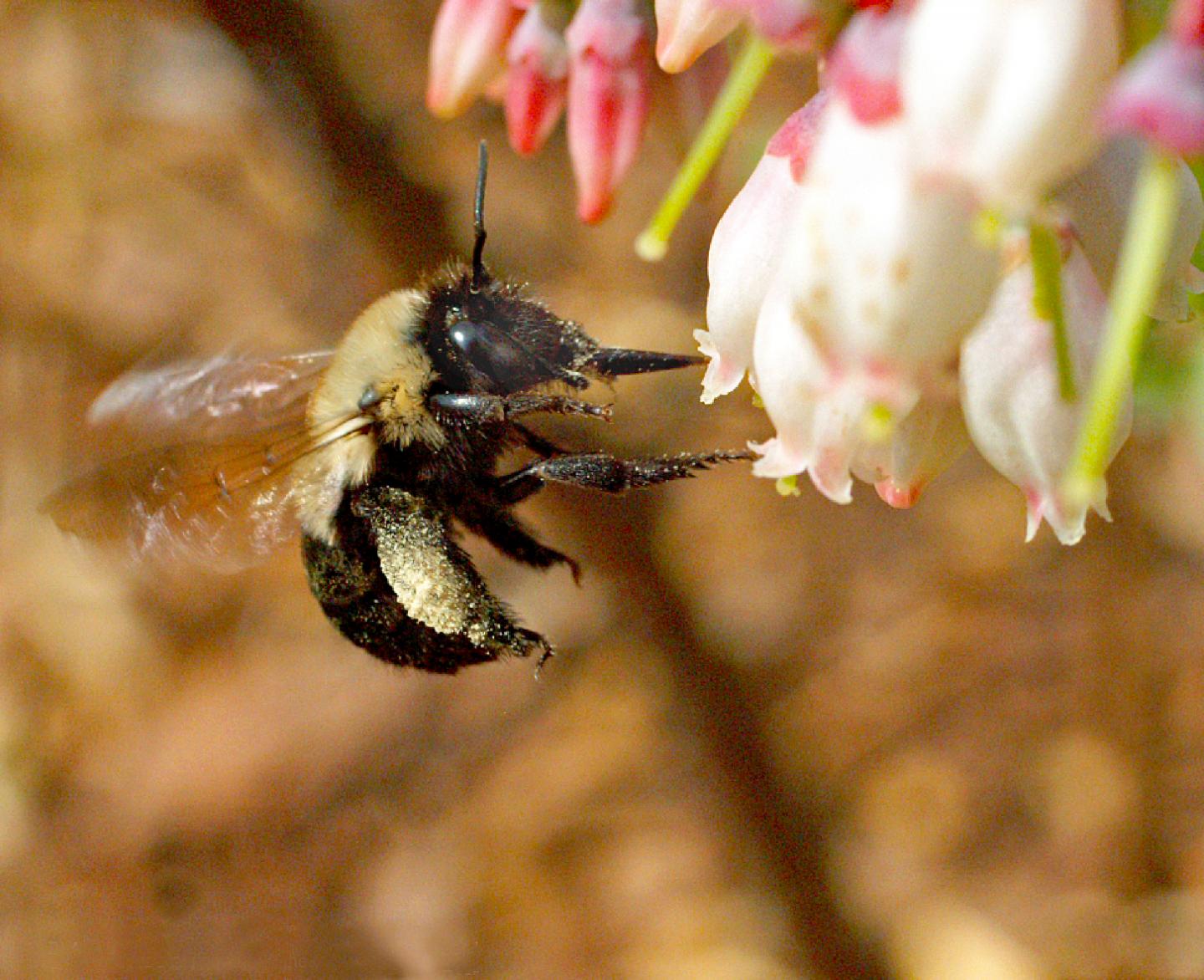Southeern blueberry bees are the best

Credit: Photo credit Blair Sampson, ARS.
BATON ROUGE, LOUISIANA, June 17, 2019–Getting an excellent rabbiteye blueberry harvest requires helpful pollinators–particularly native southeastern blueberry bees–although growers can bring in managed honey bees to do the job, according to Agricultural Research Service (ARS) scientists.
This is especially true for commercial rabbiteye blueberry producers in Mississippi and Louisiana. With sufficient pollinators, they have been able to increase the percentage of flowers setting fruit from 10-30 percent to 70 percent or more. A mature rabbiteye blueberry bush can produce as much as 15 pounds of berries.
Fully pollinated berries also are bigger and mature earlier than fruit from inadequately pollinated flowers. So, bee-pollinated flowers produce fruit that bring a premium in the marketplace.
“We looked at multiple species of bees to see which did the best job of pollinating rabbiteye blueberries. We tested managed honey bees, native bumble bee species, southeastern blueberry bees and carpenter bees,” explained research entomologist Robert Danka with the ARS Honey Bee Breeding, Genetics, and Physiology Research Laboratory in Baton Rouge, Louisiana, who co-led the study.
Of these bees, only the southeastern blueberry bee and the honey bee significantly increased fruit set, according to Danka “And the native southeastern blueberry bee did the best job,” he said.
But the only way for commercial growers to have enough southeastern blueberry bees to provide a superior level of pollination is to provide habitat on the edges of their fields that encourages their population to grow.
“What commercial growers can do is provide woodlands near the edges of their fields because that’s where southeastern blueberry bees prefer to nest. They are ground-dwelling bees that like shade and leaf litter but don’t like wet or soil heavy with organic material,” explained research entomologist Blair Sampson with the ARS Thad Cochran Southern Horticultural Laboratory in Poplarville, Mississippi.
A small grower with 1-3 acres of blueberries can probably get by solely with the pollination of native bees, especially if they have encouraged them with attractive habitat. But a grower with fields of 25 acres and more should probably consider supplementing by bringing in honey bee colonies, Sampson pointed out.
Complicating the matter is that some southeastern blueberry bees’ population vary greatly from year to year, depending on rain and other weather conditions while other populations were reliably present every year in the study.
“A farmer who sees that during the first few days of bloom they are not getting prolific visits from the native bees should probably arrange to bring in some honey bee colonies. But even that may not guarantee ample pollination, because there is no way to be sure honey bees will stay on blueberries if there is something else in bloom that is more attractive to them,” Sampson added.
“After all, rabbiteye blueberries are native North American bushes and honey bees are not natives so there was no co-evolved adaptation between these species.”
###
The Agricultural Research Service is the U.S. Department of Agriculture’s chief scientific in-house research agency. Daily, ARS focuses on solutions to agricultural problems affecting America. Each dollar invested in agricultural research results in $20 of economic impact.
Media Contact
Kim Kaplan
[email protected]
Original Source
https:/




